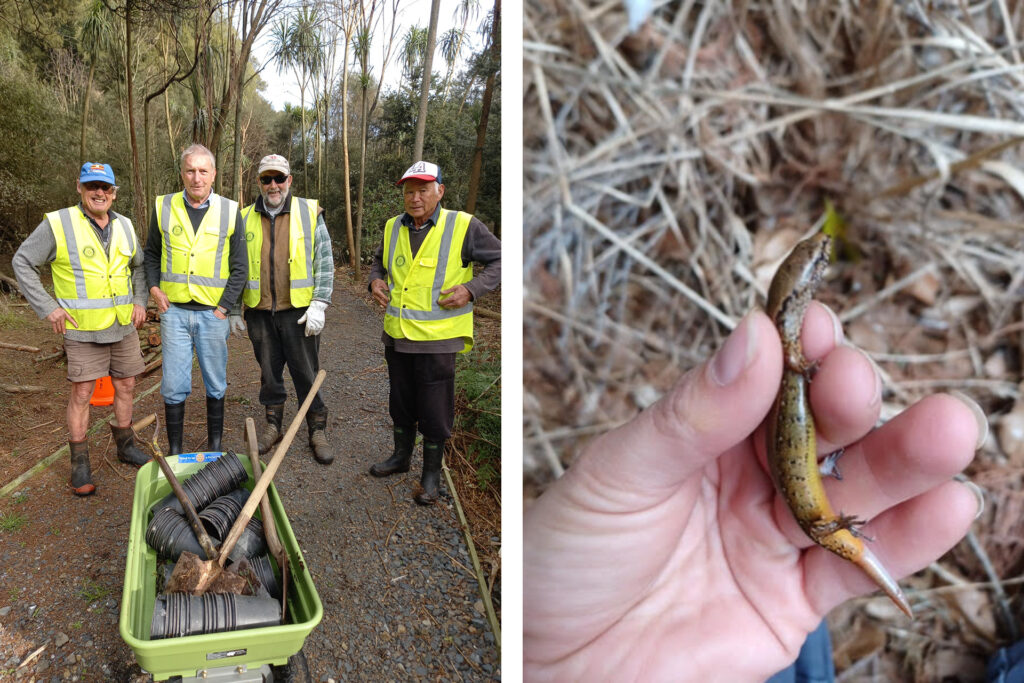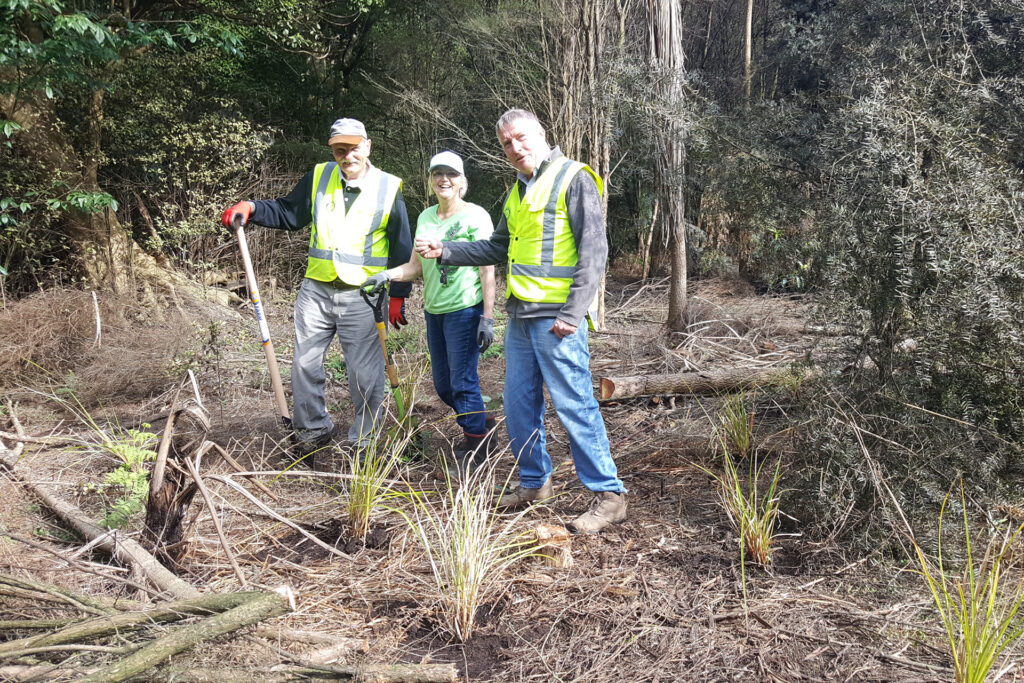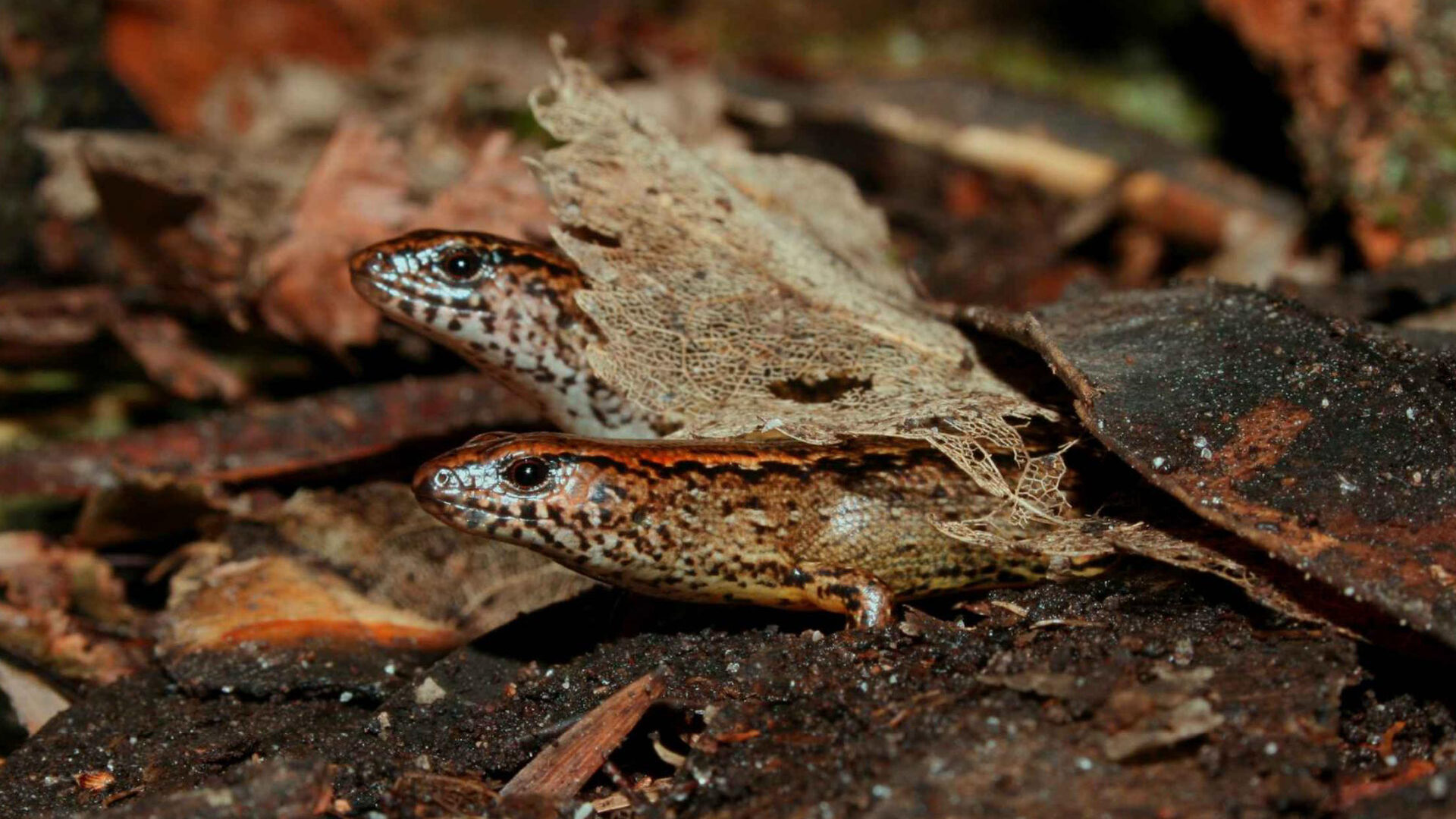When it comes to conservation, even the little guys – like New Zealand’s native copper skink – deserve a helping hand in order to thrive.
Fourteen native copper skinks, or mokomoko, were recently rescued from a housing development site in Te Awamutu – a town in the Waikato region in the North Island of New Zealand – and released into a safe, pest-free sanctuary at Rotopiko near Ōhaupō.
Copper skinks are one of New Zealand’s smallest native skinks, only reaching SVL (snout-vent-lengths) of up to 76mm.
Volunteers from the Rotary Club of Te Awamutu have been working with the New Zealand Wetland Trust throughout the year to support its Lake Rotopiko restoration plan, providing a range of environmental activities including pest surveillance, native plantings, and weed clearing.

Rotary volunteers also constructed the wood stack refuges for the rescued skinks and were on hand to witness the first release. Club President Stephen Cox said that environmental issues are now “firmly on the club’s agenda” and members look forward to the Friday environmental sessions at Lake Rotopiko, when they pull on their boots to help protect and restore the wetlands.
The first skink was welcomed to the sanctuary by Ngāti Apakura representatives Hazel Wander and Bill Harris, with a moving waiata announcing, “kua tae mai nei te mokomoko” – the skink has arrived.
The National Wetland Trust reported this was the first known release of a threatened animal into
the reserve.

Waipā District Council biodiversity planner Hilary Webb said the construction earthworks as part of the Te Awamutu development would have impacted copper skinks, which are protected under the Wildlife Act.
“While we would prefer not to destroy habitat, relocating the skinks was a means of balancing development with protecting a species that is classified as ‘at risk – declining’, meaning they are at some risk of extinction,” Hilary said.
Lizard expert Jennifer Gollin of Ecology New Zealand captured the first skink from an area of grass and carefully transported it to the release site. Following the waiata and a quick health check, she gently released it into the wood stack, where it promptly headed off to explore its new home.
Copper skinks have short lives in the presence of predators like rats and cats, but inside the pest fence they can live for many years.
If further skinks are found during the construction period, they will be also be released into the site as they are found.
